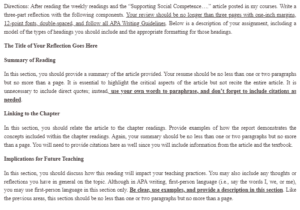Compound and Serious Communication Impairments in Kids
Usually, kids with compound and austere communication impairments cannot meet their communication necessities using their natural voices (King & Fahsl, 2012). At times, there could be a recommendation for augmentative and alternative communication structures to replace or compensate for biological agents. Many disabled learners are currently being schooled in inclusive settings for part or the whole of the school day. Besides the academic interventions, enabling social interactions to enhance social competence in disabled kids should be part of all classrooms. Typically, the necessity of surging social connections tends to be particularly pertinent for learners with communication conditions, who could be detached from typical social relations in the class because of the utilization of AAC systems. Hire our assignment writing services in case your assignment is devastating you.
For learners with compound and severe communication conditions who utilize AAC structures, this procedure primarily focuses on cumulating knowledge and comprehending the disability and pertinent technology for classroom peers and instructors. Tutors could contribute to social competence development for learners utilizing AAC by planning interactions that upsurge the familiarity with multimodal communication. They could also plan interactions that surge the AAC systems’ knowledge and develop comprehension of AAC communication obstructions. Additionally, the planned interactions could develop the expertise of suitable interaction abilities that are prerequisites to successfully communicating with an individual who utilizes AAC.
Linking to the Chapter
This article relates to this chapter in that both talk about communication skills and their importance. Communication can be encouraged by introducing interesting materials, placing increasingly needed materials out of reach, offering choices, and sabotaging social interactions ( Browder, 2001). For instance, they create silly circumstances to govern whether learners will question or comment. Additionally, the chapter talks about augmentative and alternative communication systems. The chapter discusses AAC as an alternative speech and the presence of aided and unaided systems. The AAC technologies comprising speech-generating devices provide novel communication chances for people with compound communication necessities (McNaughton et al., 2008). For both the chapter and the chapter, teaching AAC use tends to be vital. In the chapter, teachers are advised to prepare using antecedent and consequence approaches. Typically, the antecedent provides motivation and embeds teaching in natural routines, which vary in reinforcement and give satisfaction (Browder, 2001). In the article, the instructors are advised that they could contribute to social competence development for learners utilizing AAC by planning interactions that upsurge the familiarity with multimodal communication. Teachers can also plan interactions that surge the AAC systems’ knowledge and develop comprehension of AAC communication obstructions (King & Fahsl, 2012). Typically, the teaching of AAC has been deemed vital in both the article and the chapter. Even though AAC tends to be compound, the fundamentals could quickly be clarified to school-age kids (King & Fahsl, 2012).
Implications for Future Reading
I have found this reading significant, and I will use it in the future, mainly when dealing with kids with compound and austere communication impairments. I will use augmentative and alternative communication structures to replace or compensate for the natural voices of disabled learners. Even more vital is that I will increase social connections for such children because they are typically detached from typical social relations in the class, owing to the utilization of the AAC systems. For example, if a child is using the AAC, I will plan collaborations that expand the familiarity with multimodal communication. Typically, my students will highly benefit from the knowledge I have gained.
References
Browder, D. (2001). Curriculum and assessment for students with moderate and severe disabilities. New York: Guilford Press.
King, A. M., & Fahsl, A. J. (2012). Supporting social competence in children who use augmentative and alternative communication. TEACHING Exceptional Children, 45(1), 42-49.
McNaughton, D., Rackensperger, T., Benedek-Wood, E., Krezman, C., Williams, M. B., & Light, J. (2008). “A child needs to be given a chance to succeed”: Parents of individuals who use AAC describe the benefits and challenges of learning AAC technologies. Augmentative and alternative communication, 24(1), 43-55.
ORDER A PLAGIARISM-FREE PAPER HERE
We’ll write everything from scratch
Question
Directions: After reading the weekly readings and the “Supporting Social Competence….” article posted in my courses. Write a three-part reflection with the following components. Your review should be no longer than three pages with one-inch margins, 12-point fonts, double-spaced, and follow all APA Writing Guidelines. Below is a description of your assignment, including a model of the types of headings you should include and the appropriate formatting for those headings.

Compound and Serious Communication Impairments in Kids
The Title of Your Reflection Goes Here
Summary of Reading
In this section, you should provide a summary of the article provided. Your resume should be no less than one or two paragraphs but no more than a page. It is essential to highlight the critical aspects of the article but not recite the entire article. It is unnecessary to include direct quotes; instead, use your own words to paraphrase, and don’t forget to include citations as needed.
Linking to the Chapter
In this section, you should relate the article to the chapter readings. Provide examples of how the report demonstrates the concepts included within the chapter readings. Again, your summary should be no less than one or two paragraphs but no more than a page. You will need to provide citations here as well since you will include information from the article and the textbook.
Implications for Future Teaching
In this section, you should discuss how this reading will impact your teaching practices. You may also include any thoughts or reflections you have in general on the topic. Although in APA writing, first-person language (i.e., say the words I, we, or me), you may use first-person language in this section only. Be clear, use examples, and provide a description in this section. Like the previous areas, this section should be no less than one or two paragraphs but no more than a page.

